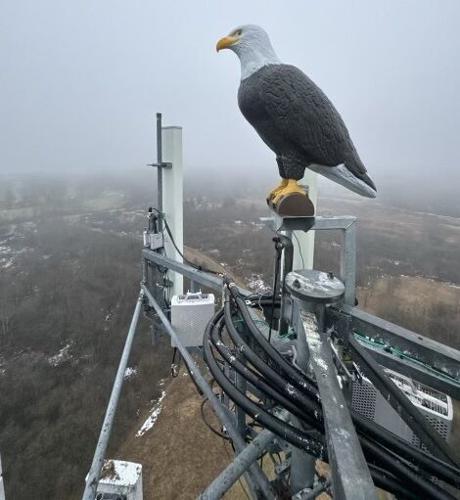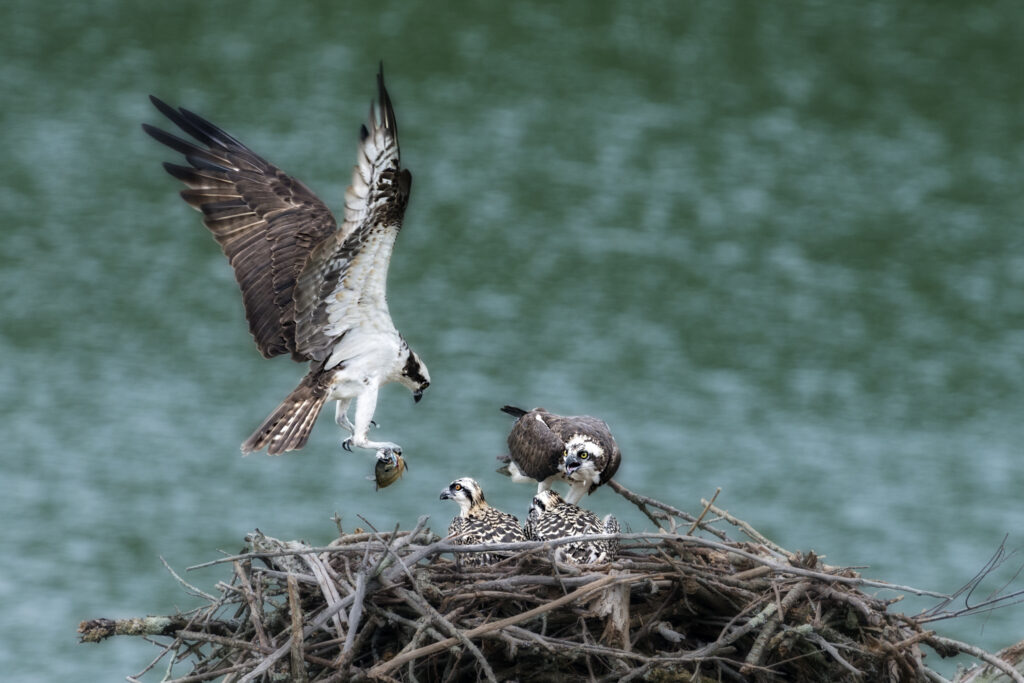
Provided photo
It’s common for birds to foul up cellphone towers with their nests. Now, Verizon is winging a new solution to take care of the problem.
The wireless network operator is adding eagle decoys to some of its cellphone towers to scare away birds that could nest in the towers and wreak havoc on customers’ connections.
“Eagles are natural predators,” said Chris Serico, a Verizon spokesperson. “Ospreys in the natural world identify eagles as establishing territory and a dominant natural threat.”
Their presence – or the illusion of it – is enough to scare away birds such as osprey that might be considering making their home there.
“We just don’t want birds to nest in our towers because it’s not ideal for the birds or for us,” Serico said. “Generally it’s just a bad idea to have birds nesting in our equipment.”
Decoys are a common technique used by farmers and ranchers to discourage rodents and other animals from crops and cattle. They are also a humane deterrent used to keep birds from nesting in airports, water towers and gas pipelines.
Bird Deterrent Technologies, based in Florida, installed the decoys and has made a business of humanely clearing out vultures and other destructive birds.
“This solution also helps ongoing osprey conservation efforts,” Serrico said. “By encouraging ospreys to nest in natural settings, we help maintain their safety and well-being.”
Cell towers are very attractive to birds like osprey when making homes because they are high up in the air, stable and not easily accessible to predators who live on the ground. Because towers make such a good nesting spot, ospreys return to them year after year.
Osprey nests are a widespread problem for cellphone companies.
Because ospreys are federally protected during the nesting season, dealing with their nests can cause maintenance delays.
“When an osprey nests in a cell tower, state Department of Environmental Conservation rules prohibit tower access and on-site repairs, which can impact both public safety and day-to-day coverage and capacity,” Serico said.
They can interfere with service, destroy equipment that is expensive to fix or replace and create hazardous conditions for workers.
“Cell sites that host osprey for nesting season cause countless hours of lost revenue and expenses of monitoring both the beginning and the ending of the nesting season,” reads a section on the Bird Deterrent Technologies website. “Cell tower maintenance is restricted significantly during these months of breeding and nesting seasons.”
Verizon has already installed one eagle in Chautauqua County – the first in Western New York – and has another one planned for an undisclosed tower in Buffalo.
Verizon worked with SBA Communications Corp., which owns the Chautauqua tower, and Bird Deterrent Technologies to install the eagle decoy. SBA Communications’ team consulted with Bird Deterrent Technologies before climbing the tower to install the eagle decoy in late January.


